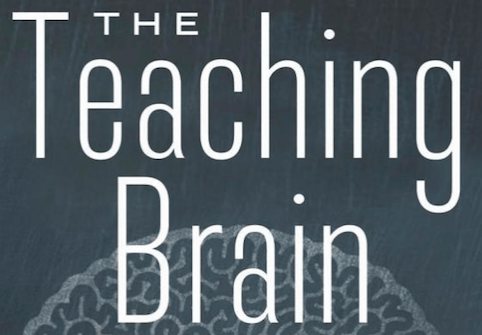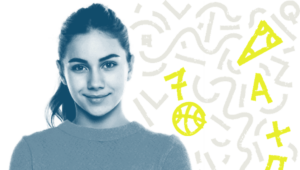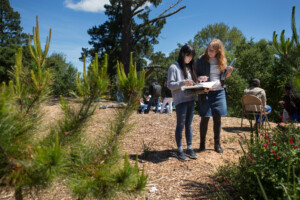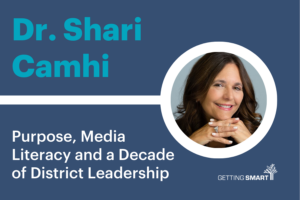The Teaching Brain and the Science Behind Great Teaching

I recently read The Teaching Brain: An Evolutionary Trait at the Heart of Education by Vanessa Rodriguez with Michelle Fitzpatrick. As a former teacher, I was interested to learn more about the science behind great teaching. The book seeks to answer the question, “What is teaching?” and makes the assertion that teacher quality is so important and yet sometimes misunderstood. So, do we know the science behind what makes great teaching?
High quality teaching isn’t about quick fixes or making sure teachers have a set number of skills. Good teaching isn’t about skills on a checklist. (Good learning isn’t just being able to cross items off a checklist either).
The authors draw on the science of human development and define teaching as “a cognitive skills that develops in people over time.” As a former teacher, I know all too well that good teachers get better over time. I think back to my first year of teaching and wish I knew then what I know now.
My favorite part of the book was the teacher interviews. The book is full of great interviews with teachers from Pre-K through high school. They talked about positive interactions with students and relationships as being key to their teaching: “Teachers realized that they form relational bonds with their students that are essential to the learning and teaching that happens in their classroom.” One teacher said, “It’s back to that connection piece…I want children to know when they walk in the door, I’m authentically happy to see them. And it matters that they came to school, and it matters that we’re going to spend this time together.”
Another teacher spoke about how it was important to her to be authentically who she was in front of her students. For example, she took time off after her father died, then came back and told her students, “I might cry, and I want you to know that’s it’s okay if you see me crying.” It’s important for teachers to be human in front of their students, and to model this for their students.
Some scientific truths about teaching:
Teaching is a meta-cognitive process. It’s not only that teachers are effective in their interactions with students, but they are aware of their interactions. So, how teachers interact with students is important, AND equally important is the awareness of how those interactions take place. The authors write:
Expert teachers use meta-cognitition- being aware of their level of awareness- to understand how they are thinking about what their students are thinking. An expert teacher is engaging in meta-emotional thinking when she is aware of how she is feeling about her own teaching actions and how she feels about her student’s feedback to those actions.
Teaching is collaborative. Teachers and learners share knowledge, responsibility, and work. Effective teachers not only teach, they also act as coaches. This “type of collaboration was described as making decisions together as part of the bargain of teaching and learning.”
Teachers should tap into the “power” of group dynamics. It’s important for teachers to find flow in their work and help create synergy among and between students. Teachers who can do this value peer teaching and group dynamics- and see group dynamics as a powerful agent of good teaching. One teacher said:
I feel like that’s a huge responsibility that these kids bring who they are, so it’s my job to find that synergy, and that means I have to spend a lot of time getting to know each one, one-on-one, and then when I put them in a group…that they’re actively listening to each other. It is so powerful when they take on the role of peer teaching with each other.
Effective teachers are flexible. The authors speak of the importance of flexibility:
A significant aspect of a teacher’s practice is how flexible they are when unanticipated challenges arise. This is often a strong measure of one’s practice. Are you willing to be flexible and even let the learner lead you and other learners, or do you consider yourself the sole teacher? Because teaching is an interaction with mutual effects, its practice should reflect an awareness of all this. All teachers are also learners.
A deep commitment to lifelong learner is something that teachers can also model for their students. I once heard someone say, “Students follow a teacher’s directions but they follow more how a teacher is.” Good teachers model the way for their learners. Good teaching is a science and an art.
For more on teaching, see:








Rich
As a teacher for over 21 years now, I agree with just about everything the author of this article states, except the last line: "Good teaching is a science and an art." It is an art, but not much of a science. Calling teaching a science is what has gotten us in this mess of over-testing and data accumulation. Teaching and education is a wing of psychology, which most of us understand isn't a science as of yet: Things of science can actually be measured. Science won't accept education as a science due to its ability to NOT be able to be accurately measured. This lack of accuracy supports even more the need for good teachers in the classroom to work closely with students to learn and prove what they have learned. This testing doesn't even come close to giving a glimpse of what a student is actually capable of.
Mike Lyons
Finally an article that speaks to REAL teaching. It's not technique, it's not subject matter, it's trust. If your students trust you, they will learn. End of story.